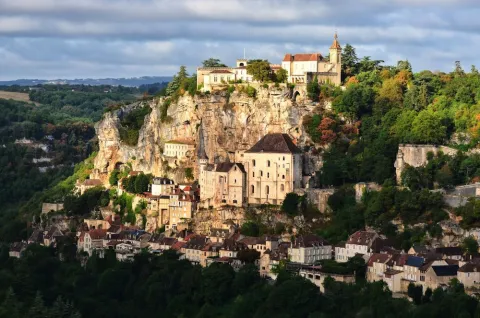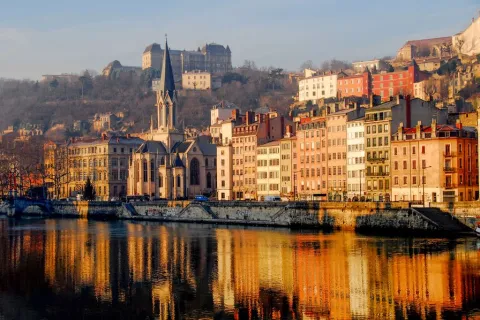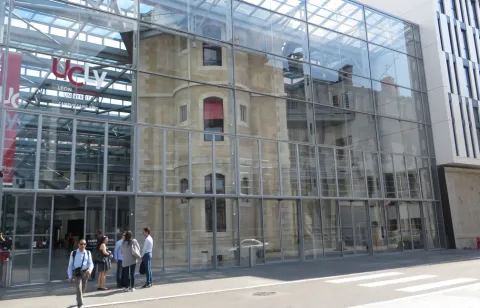UCdL - Information on the Country and Region
The Country

Since 1958, France has constructed a presidential democracy resistant to the instabilities experienced in earlier parliamentary democracies. The official language in France is of course, French. France's economy combines modern capitalistic methods with extensive, but declining, government intervention.
For more information about France see sites such as en.wikipedia.org/wiki/France
The City

With a population of approximately 450,000 inhabitants and 169,000 of those students, Lyon is characterized as the first “university city” in France after Paris.
For more information about Lyon, visit en.wikipedia.org/wiki/Lyon.
The University

To view information on the International Business Program (IBP) and yearly schedule click here.
NOTE: schedules posted on the IBP site apply to ESDES - all paperwork submitted to the U of L Dhillon School of Business must allow for processing and submission prior to ESDES deadlines.
Fun Facts
- France is by far the most popular tourist destination in the world, with some 82 million visitors annually.
- France was the first country in the world to ban supermarkets from throwing away or destroying unsold food – since February 2016, shops must donate wastage to food banks or charities.
- At least 40 percent of the music on private radio stations must be of French origin – since 1996, the country’s top media regulator the Conseil Supérieur de L’Audiovisuel (CSA) has been charged with enforcing this French law. The CSA also requires half of the French music quota to be less than six months old.
- The first public screening of a movie was by French brothers Auguste and Louis Lumière on 28 December 1895 – they used their invention the cinématographe (hence ‘cinema’) to show 10 films of about 50 seconds each at the Salon Indien du Grand Café in Paris. They made many more films but predicted that ‘cinema is an invention without any future'.
- The Louvre Museum in Paris was the most visited museum in the world in 2014 – with an amazing 9.3 million visitors, it received almost the same amount of people as the population of Sweden.
- French wines can reach astronommical prices – in 2014, Sotheby’s sold a 114-bottle lot of DCR Romanee-Conti wines in Hong Kong for more than EUR 1.45m to an anonymous Asia-based buyer, a world record for a single wine lot. That works out to about EUR 1,619 per standard glass.
- French gastronomy was awarded UNESCO World Heritage Status in 2010 – when it was added to the list of ‘intangible cultural heritage of humanity’. Experts described the importance of French gastronomy as ‘a social custom aimed at celebrating the most important moments in the lives of individuals and groups’, as well as 'emphasising togetherness' for its function of bringing friends and family closer together and strengthening social ties.
- The French eat around 30,000 tonnes of snails a year – but only about 1,000 tonnes of the classic French delicacy (served with garlic, parsley and butter) come from France; only some 100 registered snail farms existed in France in 2015. If you've eaten snails in France, chances are they were plucked from the fields and roadsides of Eastern Europe.
- The camera phone was invented in France in 1997 by Phillipe Khan.
- France has won the most Nobel Prizes for literature of any country.
Top 5 Places to Visit
- Musée des Beaux Arts: The impressive cultural heritage of Lyon is evidenced in this Musée des Beaux-Arts, considered the next-best fine arts museum in France after the Louvre. At the Place des Terreaux near the Hôtel de Ville (Town Hall), the museum occupies the 17th-century Palais Saint-Pierre, a former Benedictine convent. This museum has one of Europe's largest collections of artwork, including antiquities, paintings, sculpture, and decorative art-from ancient Egypt to the present day.
- Quartier Saint-Jean and Quartier Saint-Georges (Old Town): Get lost in Lyon's atmospheric to discover the city's Old World charm. This medieval quarter north of the cathedral is filled with narrow cobblestone lanes and quiet little courtyards. For those interested in watching a traditional marionette show, head towards the to the puppet theater.
- Presquìle District: Lyon's Presqu'ile District is a piece of land, sort of like an island, within the river. This neighborhood is distinguished by its beautiful architecture and monumental town squares. The is worth visiting just to see the fountain by F.A. Bartholdi. This grandiose work of art depicts the triumphal chariot of the Garonne River.
- Centre d`Histoire de la Resistance et de la Deportation: During the Second World War, Lyon was known as the "Capital of the Resistance" because of the strength of its struggle against the Nazi regime. The Resistance and Deportation History Centre is housed in the building that was used by the Head of the Gestapo in Lyon. This building is now dedicated to the remembrance of the victims who were held in the building's cellars. The History Center tells the story of the deportees, the hidden children of deportees, members of the resistance, and others who lived through the Second World War.
- Basilique Notre-Dame de Fourviere: In a majestic location on the Fourviere Hill, the Basilique Notre-Dame rises to a height of 130 meters above the Saone River. The Basilica is accessible by funiculars running up the hill. This stunning church was built after the Franco-Prussian War when the people of Lyon had vowed to create a Marian sanctuary if their city was spared. The construction took place from 1872 to 1884.
